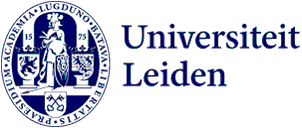NB Language spoken in course is Dutch unless English-speaking students participate
Admission requirements
Clinical assessment and treatment: general introduction.
Description
During the differentiation phase, we consider certain aspects of the work of an ’orthopedagoog’, specifically in the area of youth welfare work. This includes for instance more focus on assessment in ambulant care, daycare, foster care and residential care. In addition, the course deals also with team supervision and treatment planning, forensic assessment and intervention, the legal framework, intercultural aspects and finally, treatment possibilities.
This course builds on the Clinical Assessment and Treatment: general introduction course and – in as far as it applies – on Clinical skills (Clinical Assessment and Treatment).
Course objectives
Achievement levels: 1-2-3-4-5-6-7-8-10-12-13-14-15-16-18-19.
Timetable
To be announced.
Mode of instruction
The course consists of 10 lectures, a paper and a symposium. During the symposium the students’ papers are presented. The course is rounded off with an essay examination.
Assessment method
Literature examination, a paper and a presentation during a mini-symposium.
Paper
From the start of the course, students are expected to work on a paper. These are written in small groups of three. The topics are introduced during the first lecture and divided among the students. The paper consists of a minimum of 5 pages (excluding the front cover, table of contents and the literature list), line spacing 1 ½. Students are expected to look for literature concerned with their topic, and it should be recent literature. 80% of it must be peer-reviewed and in English.
The paper is then given a pass or a fail. Students will be given the opportunity to rewrite a paper that did not merit a pass. If on the second re-write, the paper still does not warrant a pass, a new paper can only be submitted in the following academic year. A pass paper gives access to the symposium.
Symposium
The papers are presented by groups of three students during a symposium. All students are expected to attend the entire symposium and to give their presentation on that day. A day consists of a minimum of 4 presentations. It is important that each of the students make a clear contribution to the presentation. This process will also count towards the final mark. The presentations last in total 35 minutes, divided into 20-25 minutes of presentation and 10-15 minutes for discussion and questions.
Assessment: pass or fail.
The presentation must in any case consist of:
A research question
An overview of the existing knowledge from the compulsory literature
New recent literature
Implications for clinical practice
Discussion
If the performance of one of the students in a group is below standard, the total assessment for the group will be a fail. If a group fails the presentation, a resit is allowed.
Blackboard
This course makes use of Blackboard.
Reading list
Van den Bergh, P.M., & Weterings, A.M. (red.)(2010). Pleegzorg in perspectief. Assen: Van Gorcum.
To be announced.
Registration
Please note that separate uSis registration is mandatory for lectures, seminars, exam and re-exam.
Registration for the lectures of the course is possible as of two months through one week before the first lecture at the latest;
Registration for the seminars of the course is possible as of two months through one week before the first lecture at the latest;
Registration for the exam is possible as of two months through one week before the exam at the latest;
Registration for the re-exam is possible as of two months through one week before the re-exam at the latest.
Students who don’t register cannot attend classes or take the (re)exam.
Contact information
Co-ordinator: dr. P.M. van den Bergh
To make an appointment, please send an e-mail.
